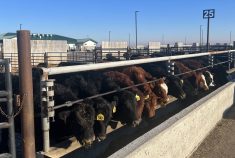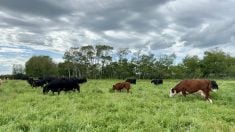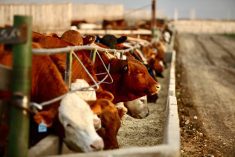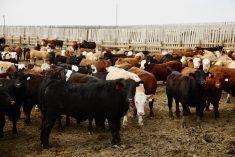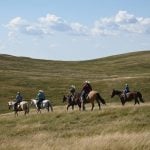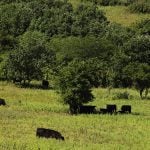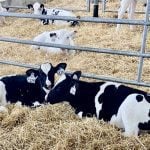Cattle are fed over winter using a variety of methods. The level of complexity and mechanization depends on the operation and management. The overall objective is to keep cows in good condition, healthy and productive.
For any system to work, accurate animal and bale weights, along with a feed inventory of all feeds are needed. It is not necessary to weigh all animals or bales, but weighing some will provide a representative average. This information is needed to balance rations by efficiently allocating available feeds to meet animal requirements and to stretch feed supplies as much as possible.
Animal condition and size
Read Also
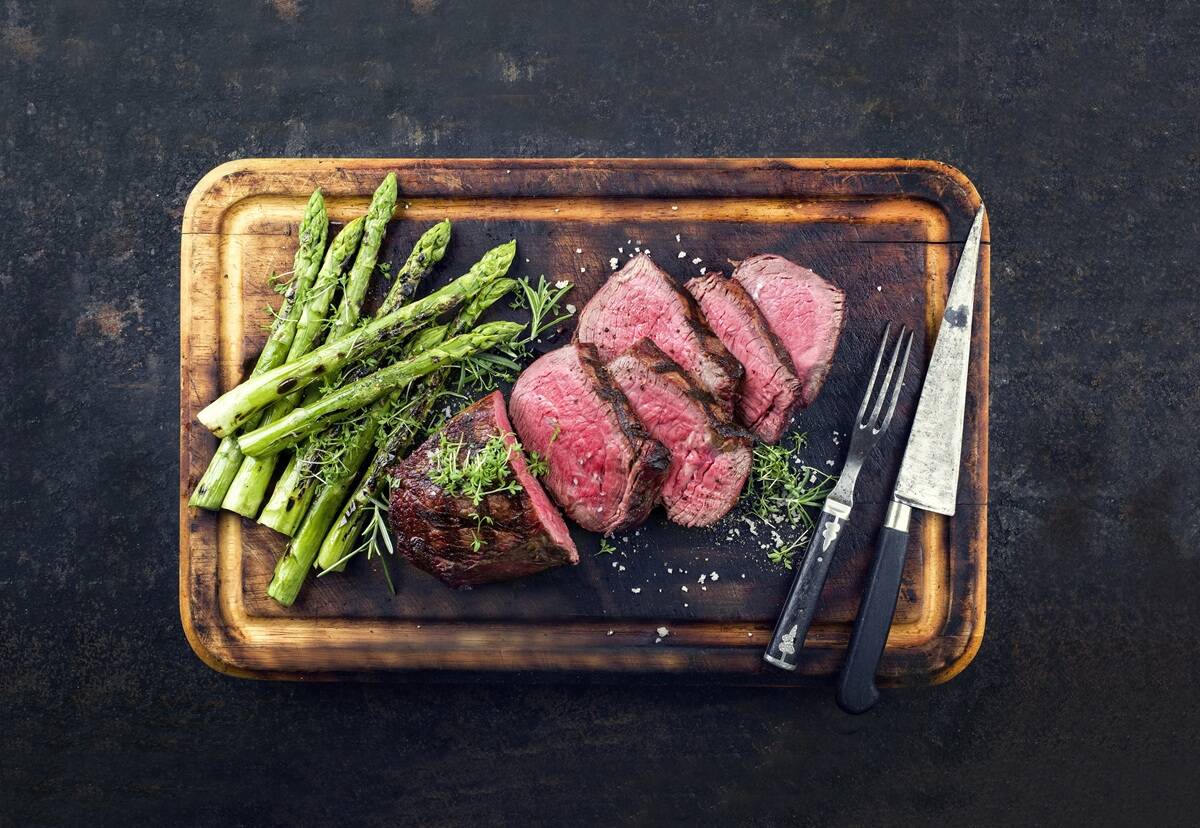
Building demand together: The impact of Canada’s beef import levy
The beef import levy has become a central tool for ensuring balance in Canada’s beef industry
Cows in good body condition going into winter have more external fat than a thin cow. This fat cover provides more insulation which reduces heat loss and lowers maintenance energy requirements. Using the Canadian body condition scoring system, a thin cow that is 90 kg (200 lbs.) or one body condition score lighter than a score of three on a five-point scale requires an additional 544 to 635 kg (1,200 to 1,400 lbs.) of hay just to keep warm. This does not include extra feed needed for the animals to gain 200 lbs. before calving.
Animals under 450 lbs. are more prone to cold stress compared to larger and mature animals. They cannot consume as much feed, which results in less heat produced from fermentation to stay warm. These animals have difficulty gaining weight over winter.
Adjusting for cold and wind
Animals can increase feed intake by 10 to 25 per cent to adapt to cold and windy conditions and can produce more heat to stay warm. Even with this adjustment, the lower critical temperature (the point where the heat produced by fermentation does not maintain body temperature) is -20 C for cows in good condition. Thin cows may have a lower critical temperature of -10 C to -15 C. Extra heat must be produced to keep the thinner cow warm.
For every 10 C drop below -20 C for a cow in good condition, the cow requires an additional two lbs. of grain in addition to the regular ration to keep warm. If no supplemental energy is provided, the animal will mobilize fat, losing weight and making the animal more susceptible to the cold.
Providing protection from the wind is important. Trees, windbreak fences, or stacked bales are options. If the air temperature is -20 C with no wind, mature animals in good condition will stay warm. As the wind speed increases, the effective temperature drops and animals become cold-stressed. For smaller animals that experience greater heat loss, open-front shelters and lots of bedding is recommended.
Snow as a water source
Light, fluffy snow can supply enough water for mature, dry pregnant cows that are grazing or are housed in an extensive feeding system. Eating snow does not increase energy requirements. Snow conditions change with the weather. If snow melts, drifts or hardens, cows will need a water source. If water requirements are not met, feed intake decreases which in turn limits nutrient intake and reduces animal performance.
Processing grain
Calves that weigh less than 700 lbs. eat slowly and chew their feed well before swallowing. Animals over 700 lbs. gulp their food with minimal chewing. They rely on rumination and secondary chewing to break larger feed particles.
Generally, it is not necessary to process cereal grains for smaller animals. The exception is when feeding corn, fababeans, or raw soybeans to small calves. These feeds should be cracked or broken into two or three pieces.
With animals over 700 lbs., digestive efficiency is reduced when the grain is not processed. Wheat, triticale or rye should be broken into two pieces. This improves digestive efficiency by 25 per cent. Unprocessed barley results in 12 to 15 per cent lower efficiency. Barley should be broken into two pieces. Corn has a five to 10 per cent improvement in digestive efficiency when rolled or cracked. Oats with a hull, which is not attached as tightly as barley, have a two to five per cent loss when fed whole to larger animals. If grain is over-processed and there are more than 10 per cent fines by weight when sieved over a one mm screen, there is an increased risk of acidosis and bloat. Voluntary feed intake is reduced when grain is overprocessed.
Changes in nutrient requirements
Smaller calves cannot eat large amounts of feed. Therefore, the quality must be higher to ensure proper muscle and bone development. For example, a 550-pound animal requires 14 per cent protein and an 850-pound animal requires 12 per cent protein (AgDex 420/52-4). Energy requirement changes with rates of gain. Protein and energy requirements for cows in mid- or late pregnancy have lower requirements than lactating cows. Rules of thumb are seven, nine and 11 per cent protein and 55, 60 and 65 per cent TDN for mid, late and lactating cows. These recommendations consider the effect of winter conditions.
Feeding system losses
No feeding system is 100 per cent efficient. Shrink occurs during hay bale storage and the fermentation process in silage. How bales are stacked influences storage loss. Bale, bunker or heap silage that is not covered with six ml of plastic has large amounts of spoilage, quality and dry matter loss.
When extensive feeding systems are used, delivering feed into a portable bunk instead of on the ground can reduce feed waste anywhere from 13 per cent for unrolled hay fed on snow, 19 per cent for shredding hay and 35 per cent for chopped silage.
Each operation is different. There is no standard answer on what or how to feed the herd. Keeping animals in good condition and healthy are the objectives of a successful winter feeding program.
For more information, see Windbreaks for Livestock (bit.ly/46g7d51) and Beef Ration Rules of Thumb, AgDex 420/52-4 (https://bit.ly/45iOhkW). c
– Barry Yaremcio holds a master’s degree in animal science (nutrition) and a bachelor’s degree in agriculture (animal science). He worked in extension for Alberta Agriculture for several years and now is a ruminant nutritionist and production management consultant. Reach him via beefconsultant.com.



